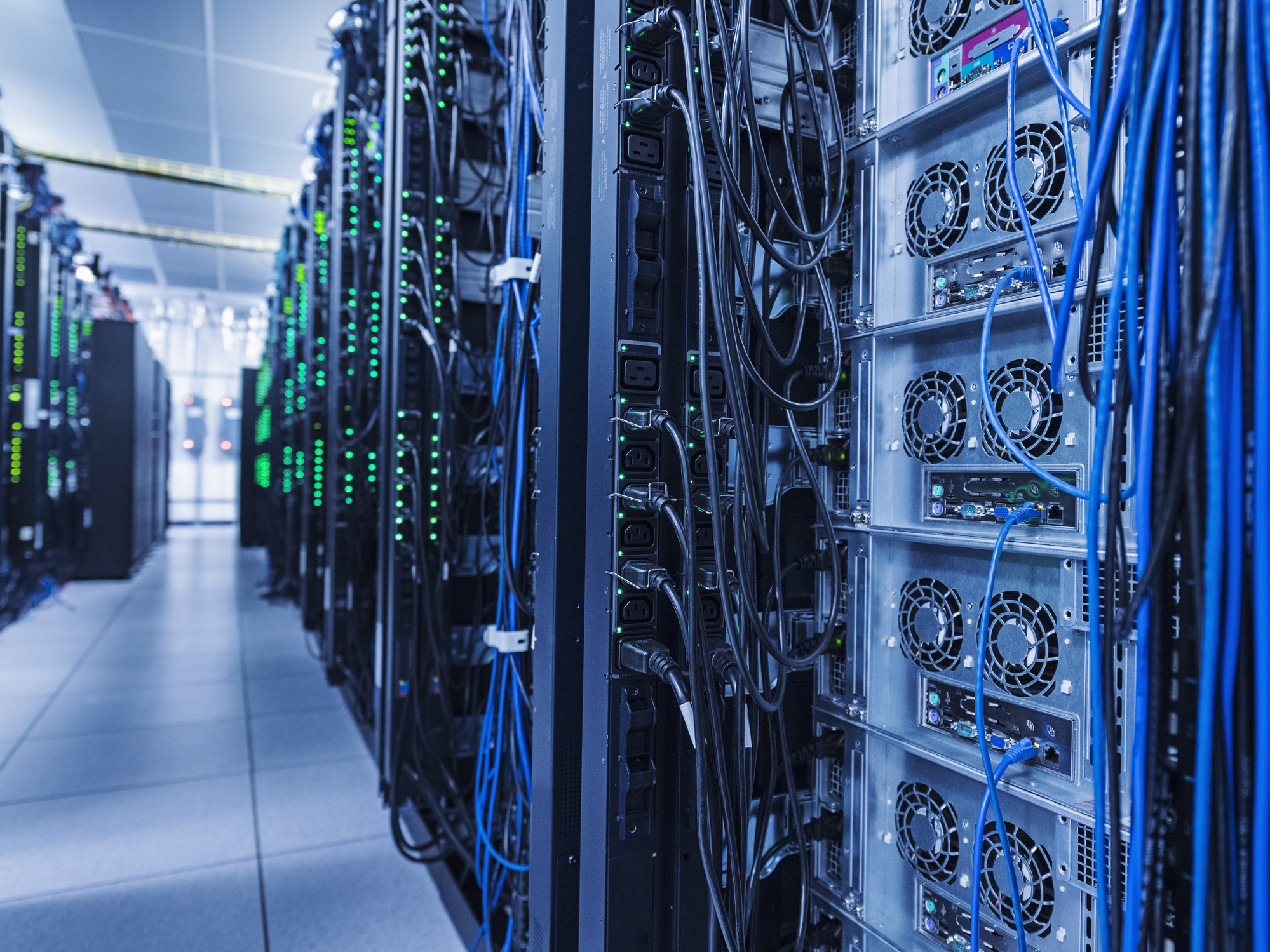In an AI Boom, Data Center Energy Cos Seek Investor Support
As they navigate shifting government policies, energy innovators are turning to private investors to meet surging data center demand

Data warehouses are high energy consumers, and with artificial intelligence innovation and adoption exploding, surging demand for energy used by AI data warehouses has placed new pressure on the nation’s power grid.
The U.S. Department of Energy released a report in December that found data centers could consume 12% of the nation’s energy by 2028. In the last decade, the energy required to power data centers in the U.S. has tripled, and it is likely to triple again in the next three years alone, the DOE predicts.
Analysts point to AI data centers, which support more complex modeling and real-time analytics with ever-growing volumes of data, as a main factor behind that increase.
Investment bank Harris Williams echoed this trend in an energy sector outlook report, noting that the expanding need for outsourced energy management providers to support data center growth is likely to fuel M&A.
Drew Spitzer, managing director of Harris Williams’ Energy, Power & Infrastructure group, says physical assets—like substations, and transmission and distribution infrastructure—as well as providers of services like maintenance, testing and inspection are in especially high demand.
“This is a fragmented landscape that combines growth with long-term stability, so it’s no surprise that investors are interested in the space and will be for some time,” he says.
Energy is a hot-button issue, particularly in today’s politically polarized climate. But there are tailwinds from both sides of the aisle supporting innovation and adoption of AI data center energy solutions.
Days before he left office, former president Joe Biden signed an executive order directing the departments of Defense and Energy to identify possible sites for private AI data center construction and development. The order also requires developers to source renewable energy solutions for those sites.
One week later, President Donald Trump declared a national energy emergency while pulling back on various clean energy initiatives put in place by his predecessor. Soon after, Trump announced up to $500 billion in support of private-sector AI data center development. While power generation plans were not explicitly outlined in the announcement, Trump has separately signaled support for nuclear energy infrastructure to meet data center energy demands.
Regardless of how competing political agendas play out, it’s clear that as AI adoption grows, the data center energy consumption challenge will need to be addressed.
A New System Heads to Market
Energy storage and distribution company Energy Internet Corporation (EIC), founded in 2018, is one business focused on addressing the energy demands of AI data centers, using a technology called compressed air energy storage, or CAES.
CAES enables storage of surplus energy from renewable sources like wind and solar and helps relieve pressure on electric grids by supporting energy generation during periods of peak demand.
But the process can be inefficient, as some energy is lost in the form of elevated temperatures during compression; that heat must also be managed through cooling systems, often using high volumes of water.
EIC has taken thermodynamic principles and existing infrastructure solutions to configure a CAES system without significantly heightened temperatures. “Our innovations are in combining variations of existing mature equipment in novel ways to solve problems that did not exist a few years ago,” explains EIC CEO Mark Weathers.
Our innovations are in combining variations of existing mature equipment in novel ways to solve problems that did not exist a few years ago.
Mark Weathers
Energy Internet Corporation
Headquartered in Saratoga, California, the company employs an 18-person staff spread across Australia, Singapore, India and Europe. So far, most of its funding has come via a federal Department of Energy grant.
Its CAES system is currently in the third generation of design and has become increasingly efficient, with greater compression capabilities, Weathers notes. With those advancements achieved, the company is now preparing to take its offerings to market.
Everyone Wants to Be Second in Line
As is often the case with innovation, few want to be the earliest adopters, Weathers says, despite eagerness for energy generation and storage solutions. “Getting customers to be the first ones to jump in the pool is our current priority,” he notes. “We’re working now to develop the commercialization process to take the technology out into the market. We know the physics work. Now it’s a question of, ‘Which is the right design and right approach to manufacturing to be able to bring this to market at a cost that makes sense for everybody?’”
Weathers points to the solar energy market’s trajectory as a likely template for how the energy storage industry might evolve. Government funding and subsidies got early solar projects off the ground, taking on initial risks and costs that set the stage for private sector adoption. “The government plays an important role in being able to subsidize new technologies and backstop risk so that commercial consumers can get comfortable,” he says. “Then capitalism takes over, costs come down, and it becomes a viable solution.”
EIC has several approaches to commercialization in mind. One path is to sell the company’s compressors to the existing industrial market. Another is to target smaller applications of the company’s technology by storing compressed air in above-ground vessels, as opposed to underground cavities that are typically used for larger applications of energy compression. Those smaller initiatives can act as a proofs-of-concept and eventually lead to larger applications, says Weathers.
Under its current federal grant, EIC is collaborating with the Oak Ridge National Laboratory to refine and optimize its technology. The company is also seeking commercial partners and investors to finance pilot projects.
In addition to some adoption hesitancy, Weathers points to a tightening of the venture capital market, as well as regulatory uncertainty, as potential hurdles to securing financing.
AI has enjoyed VC attention in the last year, accounting for a third of total VC funding in 2024, according to PitchBook data. Corporate funding for renewables and energy storage didn’t fare as well. According to Mercom Capital data, total corporate funding for solar companies declined by 24% year-over-year in 2024, while VC funding for energy storage declined 60%. Analysts point to political uncertainty as one factor behind the pullback.
Today’s political climate is not lost on Weathers. “As the demand grows for data centers, as well as for general electrification, balancing the uncertainty of the technology, the uncertainty of the regulatory and venture capital and political climate, with the immediate and increasing demand is one of the challenges.”
Finding the Funds
A search in middle-market search engine Grata yields 22,974 companies operating in the data center energy and power space, 20,520 of which are private. Only 501 are backed by a PE sponsor, the database shows.
One promising sign of future investment in this area is a $50 billion strategic partnership between KKR and Energy Capital Partners announced in October. The collaboration is intended to support AI growth through investments in data centers and power generation, according to a press release. “In order for the U.S. to maintain its advantage in AI, we will need massive new investments in power infrastructure on an accelerated basis that are capable of addressing concerns related to electricity prices and carbon emissions,” Doug Kimmelman, founder and senior partner of Energy Capital Partners, said in a statement.
As it pursues its own conversations with private investors, EIC continues to make progress in its roadmap. Looking ahead, the company aims to build out its solution to not just supplement existing energy sources but to run an entire data center on stored solar energy, entirely off the grid, around the clock.
In the near term, Weathers says data center expansion will be “literally the Wild West,” with developers and owners building infrastructure in less developed parts of the country—often where temperatures are high and water is scarce—and scrambling for energy resources.
“Many of the AI training centers are likely to be located in the western half of the U.S. in what looks like the middle of nowhere, geographically,” he says. “The ability to put up a solar or wind facility, generate the energy, store the energy and run a large AI training center in the middle of nowhere with renewable energy, and not have to depend on transmission buildout or grid connection for that data center construction, is a very powerful business case.”
With that in mind, Weathers says he is optimistic about private investment. “We’ve seen a resurgence in interest from people who we talked to three or four years ago,” he notes. “They’re back now, looking to find out how far along we are.”
Carolyn Vallejo is Middle Market Growth’s digital editor.
Middle Market Growth is produced by the Association for Corporate Growth. To learn more about the organization and how to become a member, visit www.acg.org.


